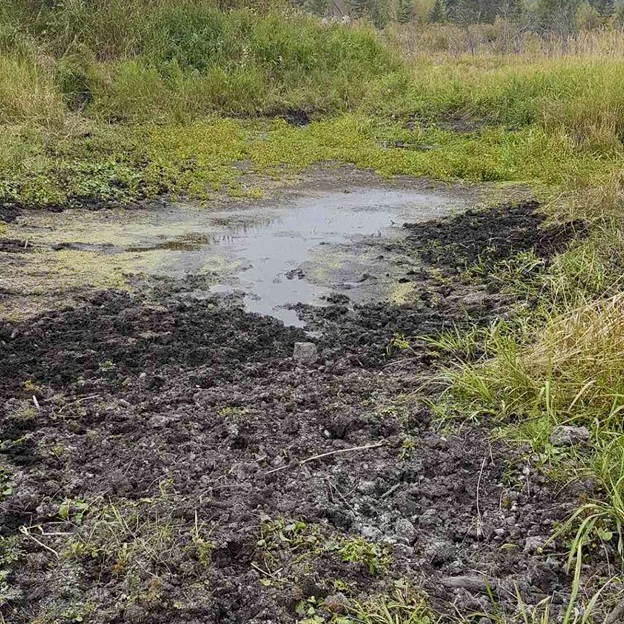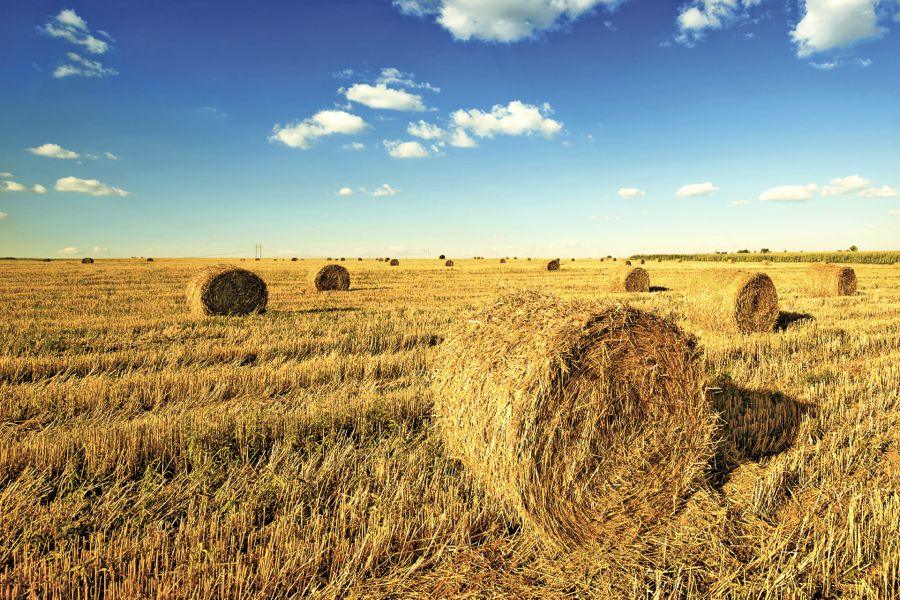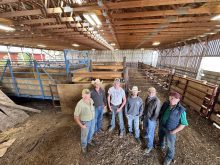Whenever the wild pig problem facing Woodlands County makes the news, Dawn Fortin receives numerous phone calls, all promising the same thing.
“Every time we get a media event that occurs, we are inundated with calls from expert hunters that want to come and fix our problem,” says Fortin, the agriculture services manager for this municipality in west-central Alberta.
Fortin turns down each offer, citing the county’s involvement in the provincial wild pig eradication program. Despite widespread media attention and experts clearly stating that recreational hunting doesn’t control wild pigs, the calls keep coming.
Read Also

Building demand together: The impact of Canada’s beef import levy
The beef import levy has become a central tool for ensuring balance in Canada’s beef industry
Wild pigs continue to wreak havoc in Canada. One of the country’s leading researchers on wild pigs has stated that this problem has already spiralled into disaster. Dr. Ryan Brook, associate professor at the University of Saskatchewan, has worked for years to raise awareness about the impending catastrophe of wild pigs spreading across the Canadian Prairies.
“Let’s be clear, wild pigs on the Canadian Prairies are expanding completely out of control,” Brook stated in a University of Saskatchewan article last December.
- [ALBERTA FARMER EXPRESS] Alarm bells are finally ringing as wild pig numbers soar
Brook runs the Canadian Wild Pig Research Project, through which his team created a database of more than 60,000 wild pig occurrences throughout the country. Most of these sightings are in Saskatchewan, but wild boars are a problem elsewhere, too. The project also developed a set of maps to illustrate how wild pig populations expanded across Canada from 1990 to the present. Brook told Canadian Cattlemen in 2019 that “in the last 10 years, on average they spread about 80,000 kilometres per year across all of Canada.”
This problem wasn’t on anyone’s mind when domestic wild boars were imported to Canada in the 1980s and 1990s for agricultural diversification. Unfortunately, the animals became notorious for escaping from farms. Being well adapted to cold winters, they thrived in the wild. With their early sexual maturity and high reproductive rate, wild pig populations grew rapidly.
Wild pigs on the loose
The landscape in Woodlands County, 170 kilometres northwest of Edmonton, is ideal habitat for wild pigs, Fortin explained at the Alberta Invasive Species Council’s (AISC) conference in March. One wild boar farm was established in the county during the early 1990s, and Fortin notes it wasn’t escapees from this farm alone that led to the local wild pig issue, as there were other farms in neighbouring municipalities.

The county promoted this unusual sector, even including this farm on an agriculture service board tour one year, until the late 1990s, when the county staff and councillors began receiving complaints about escaped wild boars from nearby landowners. “There were complaints even made directly to our local MLA, the RCMP, and Fish and Wildlife,” she says. Reports included damage to crops, stacked bales, infrastructure and riparian areas, as well as aggressive behaviour, contaminated water sources and human safety concerns.
- [ALBERTA FARMER EXPRESS] Wild pigs on the loose
The destructive nature of wild pigs poses myriad problems. With sharp tusks and sometimes weighing upwards of 600 pounds, these naturally aggressive creatures can be dangerous to other animals and humans. They’re known to cause significant damage to crops, pastures and wetlands, and are reported to harass livestock and scare them away from water sources. In the U.S., there have been instances of wild pigs killing calves and lambs.
The species also poses a major risk in transmitting disease to livestock; wild pigs spreading foot-and-mouth disease or African swine fever would be devastating to the Canadian beef and pork industries. Although African swine fever has not yet reached North America, the spread of the disease in Germany from wild boars into the domestic pig population highlights the severity of this risk.
When it became evident that wild pigs were a problem in Woodlands County, new projects sprang up to deal with the invasive species. In 2003, neighbouring Lac Ste. Anne County initiated a pilot bounty program with assistance from Alberta Agriculture and Forestry.
“In 2008, that program went province-wide. It consisted of a bounty of $50 per boar ear pair that came in,” says Fortin. “At the time, you had to have written permission from the landowner, and the location also had to be recorded for where the ears were harvested.”
The bounty program ran until 2017, and in total 276 ear pairs were collected from Woodland County. While this program helped county officials identify where wild pigs were showing up, hunting didn’t solve the problem and may have even made it worse.
“We know that hunting is not a part of the solution. We absolutely know that from all of the land managers, from all of the researchers, that hunting educates the remaining pigs,” says Megan Evans, AISC’s executive director.
“Pigs are notoriously smart animals, and if a group of pigs are exposed to hunting pressure — one or two individuals — the remaining pigs become educated and they learn how to avoid being hunted and trapped in the future,” she continues.
“That just results in these animals being harder to manage down the line, and so much so that research has shown the pigs can actually pass that information, that knowledge, onto their offspring.”
Researchers have found that eradicating an entire group, or sounder, is the only way to effectively remove wild pigs in an area, as removing only a few individuals is countered by how quickly these animals reproduce.
Using this whole-sounder removal approach, Alberta Agriculture has collaborated with Alberta Pork to create the Alberta Wild Boar At Large Eradication Project. This provincial project began in Woodlands and Lac Ste. Anne Counties in 2016. Landowners are encouraged to report wild pig sightings or damage to the AISC or their local municipality.
“We started trapping in 2018, and to date we’ve removed 210 wild boar from the landscape, almost 100 of them just in the last year,” says Fortin of the project’s efforts in Woodlands County.
Greater control measures needed
Other provinces are taking steps to control wild pig populations. In March, Saskatchewan announced its plan to prohibit new wild boar farms and create licensing regulations for existing farms. In Ontario, the province is phasing out wild boar farming, and a ban on the recreational hunting of wild pigs came into effect in January, two measures Evans would like to see replicated in Alberta.
“We are a proponent of banning and prohibiting hunting,” she says. “There’s no provincial prohibition on new farms unless there is a municipal bylaw in place, and there are those in place in some counties throughout the province. But really that should be a province-wide ban on new wild boar farms.”
Presently, wild pigs are included under Alberta’s Agricultural Pests Act, which requires landowners to take measures to control or destroy the species on their property. A recreational hunting ban wouldn’t change this obligation.
AISC has launched the Squeal on Pigs initiative to increase awareness about the problems posed by this species and to encourage landowners to report wild pig sightings and damage.
“We think that there are more producers experiencing damage from these animals than they know or that we know…because they might be misidentifying the damage,” says Evans. “So we’re putting a call out, a call to action for everybody to be on high alert, to learn to identify the signs of wild boar so that they can report them as such.”
AISC’s website features images of wild boar damage and tracks to help people identify the signs of these animals on their property. Visit abinvasives.ca/squeal-on-pigs/ for more information.
National strategy in the works
Researchers and other stakeholders have highlighted the need to truly understand wild pig population numbers in Canada, something that is still largely unknown, as current data refers to occurrences, not populations.
New research into this species is ongoing. In Alberta, a four-year study is underway to examine the province’s wild pig populations, funded by Results Driven Agriculture Research (RDAR). This project, led by Dr. Mathieu Pruvot, professor at the University of Calgary’s faculty of veterinary medicine, will monitor the spread of wild pigs across the province, their behaviour and the potential for disease transmission to livestock.
More data isn’t the only missing puzzle piece required to tackle this problem. In the past, Brook has spoken about the need for a nationally co-ordinated effort and leadership to effectively control the species. Currently, Canada’s Invasive Wild Pig Strategy, a 10-year initiative involving provincial and federal agencies and agriculture, environment and public health organizations, is in the works. The overall goal of the strategy is to eradicate the species in Canada, and to prevent wild pigs from expanding into new areas.
As well, the lack of awareness around this issue and around effective management options is considered a major barrier to successfully dealing with wild pigs.
“We’re embracing the approach that there’s no such thing as bad media attention on the subject because we really do need to raise the awareness among the general public, as well as amongst industry and as well as the hunting community,” says Charlotte Ship, industry program manager with Alberta Pork.
The provincial eradication project is now expanding its reach by hiring new hunting specialists and partnering with Parks Canada. Extension efforts with landowners, agriculture organizations and hunters are also ongoing.
“We’ve also established a Western Wild Pig Working Group, and where that’s really essential is co-ordinating some of this data that we’re collecting in each province across Western Canada so that we can get a better understanding of how these animals are moving and how they’re moving across provincial lines,” says Shipp.
“I think as we co-ordinate and start to share some information and practices and efforts and what we’re doing … we’re really positioning ourselves up for stronger and more efficient and better eradication efforts.”

















